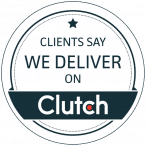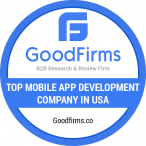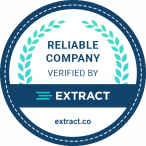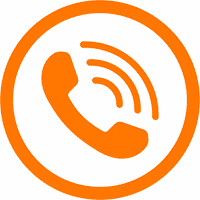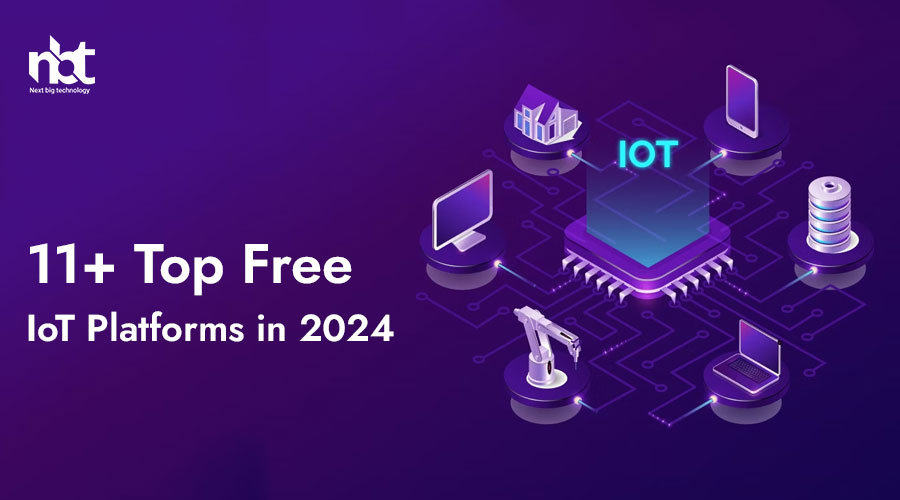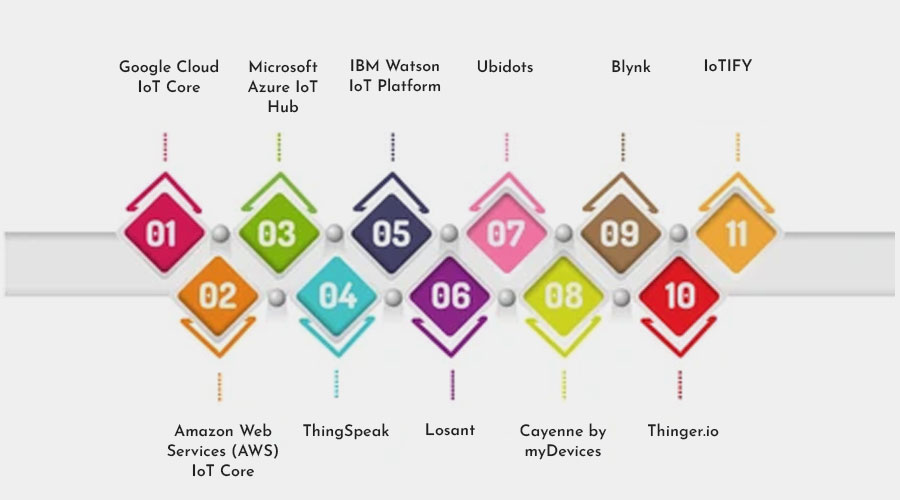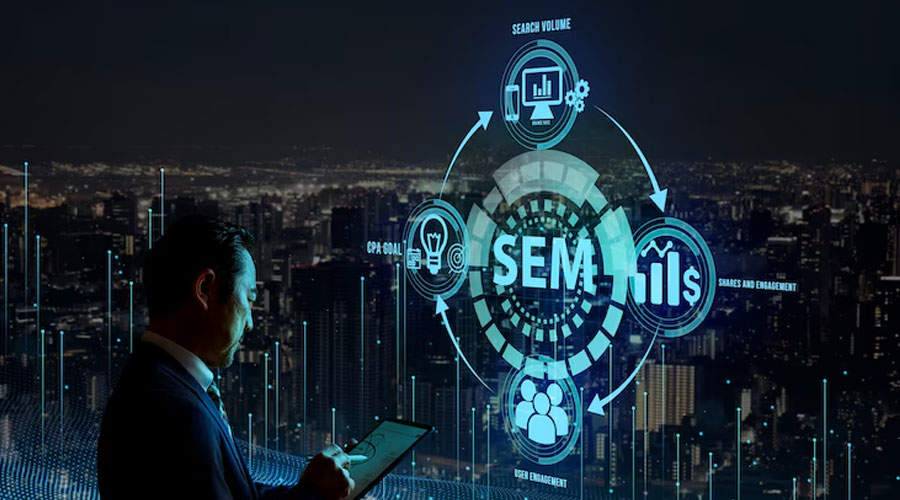Table of Contents
11+ Top Free IoT Platforms in 2024 Services
In the rapidly evolving landscape of the Internet of Things (IoT), choosing the right platform is pivotal for businesses aiming to leverage the power of connected devices. As we delve into 2024, the array of IoT platforms continues to expand, offering an abundance of features and services to cater to diverse needs. Here, we unveil the top 11+ free IoT platforms in 2024, each offering unique capabilities to fuel innovation and drive success.
- Arduino IoT Cloud: Renowned for its user-friendly interface and robust functionality, Arduino IoT Cloud empowers developers to seamlessly connect their devices and manage data effortlessly.
- Raspberry Pi: Widely recognized for its versatility, Raspberry Pi offers a cost-effective solution for IoT projects, boasting a vibrant community and extensive documentation.
- Microsoft Azure IoT: Leveraging Microsoft’s expertise in cloud computing, Azure IoT provides a comprehensive suite of services for building, deploying, and managing IoT applications at scale.
- Google Cloud IoT Core: With its scalable infrastructure and advanced analytics capabilities, Google Cloud IoT Core enables seamless integration with Google Cloud Platform services for real-time insights.
- AWS IoT Core: Backed by Amazon Web Services’ infrastructure, AWS IoT Core offers secure and reliable connectivity for IoT devices, along with advanced features such as device shadows and rules engine.
- IBM Watson IoT Platform: Powered by AI and analytics, IBM Watson IoT Platform empowers businesses to extract valuable insights from IoT data, driving informed decision-making and enhancing operational efficiency.
- ThingSpeak: Ideal for IoT enthusiasts and hobbyists, ThingSpeak provides a platform for collecting, analyzing, and visualizing sensor data in real-time, with support for MATLAB analytics.
- Ubidots: Known for its simplicity and flexibility, Ubidots offers intuitive tools for building IoT applications and dashboards, making it easy to monitor and control connected devices.
- Cayenne by myDevices: Offering drag-and-drop functionality, Cayenne simplifies the process of IoT project development, allowing users to create custom dashboards and automate tasks effortlessly.
- Losant IoT Platform: Tailored for enterprise-grade applications, Losant IoT Platform delivers robust functionality for device management, data visualization, and workflow automation.
- Blynk: With its focus on mobile app development, Blynk enables users to create interactive IoT applications without extensive coding knowledge, making it accessible to a wide audience.
- Particle.io: Designed for IoT deployments at scale, Particle.io provides a reliable and secure platform for connecting and managing fleets of devices, along with comprehensive developer tools.
How to Create a 11+ Top Free IoT Platforms in 2024
In the ever-evolving landscape of technology, the Internet of Things (IoT) continues to revolutionize how we interact with the world around us. From smart homes to industrial automation, IoT platforms play a pivotal role in connecting devices and enabling seamless communication. With numerous options available, it can be overwhelming to choose the right IoT platform for your project. To simplify your decision-making process, we’ve curated a list of the top free IoT platforms in 2024.
- Arduino IoT Cloud: Ideal for IoT enthusiasts and beginners, Arduino IoT Cloud offers a user-friendly interface for connecting devices and managing data securely.
- Raspberry Pi IoT: Leveraging the power of Raspberry Pi boards, this platform provides extensive documentation and community support for building innovative IoT solutions.
- ThingSpeak: Owned by MathWorks, ThingSpeak enables users to collect, analyze, and visualize IoT data in real-time, with seamless integration with MATLAB for advanced analytics.
- Blynk: Known for its simplicity and versatility, Blynk offers drag-and-drop functionality to create custom IoT applications without extensive coding knowledge.
- IBM Watson IoT Platform: Backed by IBM’s robust infrastructure, this platform provides advanced analytics, machine learning capabilities, and enterprise-grade security for scalable IoT deployments.
- Microsoft Azure IoT Central: Designed for businesses of all sizes, Azure IoT Central simplifies IoT solution development with pre-built templates and seamless integration with other Microsoft services.
- Google Cloud IoT Core: Leveraging Google’s expertise in cloud computing, this platform offers secure device connectivity, data ingestion, and real-time analytics for IoT applications.
- AWS IoT Core: Amazon’s IoT offering provides scalable and secure device management, data processing, and integration with other AWS services for building complex IoT solutions.
- Losant: With a focus on workflow automation and data visualization, Losant empowers developers to rapidly prototype and deploy IoT applications with ease.
- Cayenne by myDevices: Offering a drag-and-drop interface and support for a wide range of devices, Cayenne simplifies IoT project development for makers and developers.
- Particle: Known for its hardware and software ecosystem, Particle provides a comprehensive IoT platform with device management, over-the-air updates, and secure data transmission.
- Tuya Smart: Catering to smart home and consumer IoT devices, Tuya Smart offers a scalable platform with AI-powered insights and seamless integration with popular smart devices.
Why Should You Go for 11+ Top Free IoT Platforms in 2024
In the rapidly evolving landscape of technology, the Internet of Things (IoT) has emerged as a transformative force, revolutionizing the way we interact with devices and data. As businesses and individuals alike embrace the potential of IoT, the demand for robust platforms to manage and harness its capabilities continues to grow. In 2024, the market is brimming with options, but why should you consider opting for the top free IoT platforms? Let’s delve into the reasons.
- Cost-Effectiveness: Free IoT platforms offer a cost-effective solution for businesses and individuals looking to explore IoT capabilities without a significant financial investment. By opting for a free platform, you can test the waters, experiment with different features, and scale your IoT initiatives gradually.
- Accessibility: Accessibility is key in today’s interconnected world. Top free IoT platforms typically offer user-friendly interfaces, extensive documentation, and community support, making it easier for developers and enthusiasts to get started with IoT projects quickly and efficiently.
- Scalability: While free IoT platforms may have limitations compared to their premium counterparts, many still offer scalability features that allow users to expand their projects as needed. Whether you’re managing a handful of devices or a large-scale deployment, these platforms can adapt to your evolving requirements.
- Feature-Rich Solutions: Despite being free, top IoT platforms often come equipped with a wide range of features and functionalities. From device management and data analytics to security and integration capabilities, these platforms offer a comprehensive toolkit to support your IoT endeavors.
- Community Support and Collaboration: Free IoT platforms often foster vibrant communities of developers, enthusiasts, and experts. Engaging with these communities provides valuable opportunities for learning, collaboration, and problem-solving, enriching your IoT journey.
Now, let’s explore 11+ top free IoT platforms that deserve your attention in 2024:
- Arduino IoT Cloud: Ideal for IoT beginners, Arduino IoT Cloud offers a simple yet powerful platform for connecting and managing IoT devices.
- Raspberry Pi IoT Stack: Leveraging the popular Raspberry Pi platform, this stack provides a versatile and customizable solution for IoT projects of all sizes.
- Google Cloud IoT Core: Backed by Google’s infrastructure, this platform offers robust features for device management, data ingestion, and analytics.
- AWS IoT Core: Amazon Web Services (AWS) provides a scalable and secure IoT platform with extensive integration capabilities and advanced analytics.
- Microsoft Azure IoT Hub: Azure IoT Hub offers seamless integration with Microsoft’s ecosystem, along with advanced security features and machine learning capabilities.
- IBM Watson IoT Platform: Powered by IBM’s Watson AI technology, this platform enables advanced analytics, predictive maintenance, and real-time insights.
- ThingSpeak: An open-source IoT platform from MathWorks, ThingSpeak allows users to collect, analyze, and visualize IoT data in real-time.
- Blynk: With its user-friendly app builder and cloud-based infrastructure, Blynk simplifies IoT development for makers and DIY enthusiasts.
- Losant IoT Platform: Targeted at businesses, Losant offers a robust platform with drag-and-drop workflow builders, edge computing capabilities, and customizable dashboards.
- Ubidots: Ubidots provides a cloud-based IoT platform with a focus on data visualization, alerting, and remote device management.
- Cayenne by myDevices: This drag-and-drop IoT project builder allows users to create custom IoT applications without writing a single line of code.
Market Prospects of 11+ Top Free IoT Platforms in 2024 and Platforms
In the ever-evolving landscape of the Internet of Things (IoT), the role of IoT platforms has become increasingly pivotal. These platforms serve as the backbone for connecting devices, collecting data, and deriving meaningful insights to drive business growth and innovation. As we step into 2024, let’s delve into the market prospects of 11+ top free IoT platforms that are poised to make significant impacts in the industry.
- Google Cloud IoT Core: Google’s robust IoT Core platform offers seamless integration with other Google Cloud services, providing scalability and security. With its extensive analytics capabilities and global reach, Google Cloud IoT Core continues to be a preferred choice for enterprises looking to harness the power of IoT.
- AWS IoT Core: Amazon Web Services (AWS) remains a dominant player in the IoT space with its IoT Core platform. Boasting advanced features such as device management, data processing, and secure communication, AWS IoT Core is well-positioned to cater to the diverse needs of IoT deployments across various industries.
- Microsoft Azure IoT Hub: Microsoft Azure IoT Hub stands out for its comprehensive suite of tools for building and managing IoT applications. From real-time monitoring to predictive maintenance, Azure IoT Hub empowers businesses to drive efficiency and innovation through connected devices.
- IBM Watson IoT Platform: IBM’s Watson IoT Platform leverages artificial intelligence and analytics to unlock the full potential of IoT data. With its focus on interoperability and industry-specific solutions, IBM Watson IoT Platform continues to be a frontrunner in driving digital transformation across sectors.
- ThingSpeak: ThingSpeak, an open-source IoT platform from MathWorks, offers flexibility and ease of use for IoT developers. With its support for MATLAB analytics and customizable visualizations, ThingSpeak is ideal for prototyping and experimenting with IoT applications.
- Ubidots: Ubidots stands out for its user-friendly interface and rapid deployment capabilities. With features like customizable dashboards and over-the-air firmware updates, Ubidots simplifies IoT development and accelerates time-to-market for businesses.
- Losant: Losant’s IoT platform excels in scalability and workflow automation, making it suitable for large-scale IoT deployments. Its drag-and-drop interface and extensive integration options empower businesses to create tailored IoT solutions without extensive coding efforts.
- Blynk: Blynk offers a versatile IoT platform with a focus on mobile app development and user experience. With its intuitive app builder and cloud-based infrastructure, Blynk enables rapid prototyping and deployment of IoT projects for both hobbyists and professionals.
- Adafruit IO: Adafruit IO caters to the maker community with its user-friendly platform and extensive documentation. With support for a wide range of hardware and sensors, Adafruit IO is a popular choice for DIY IoT enthusiasts and small-scale projects.
- Thinger.io: Thinger.io provides a scalable and cost-effective IoT platform with support for both cloud and on-premises deployments. Its modular architecture and plug-and-play capabilities make Thinger.io suitable for a variety of IoT use cases across industries.
- Particle: Particle’s IoT platform offers end-to-end solutions for building and managing connected devices. With its hardware offerings, developer tools, and cloud infrastructure, Particle simplifies the process of bringing IoT products to market.
- Freeboard: Freeboard is an open-source IoT platform known for its customizable dashboards and real-time data visualization. With its drag-and-drop interface and support for multiple data sources, Freeboard enables businesses to create compelling IoT applications with ease.
Essential Features of a 11+ Top Free IoT Platforms in 2024
In the rapidly evolving landscape of technology, the Internet of Things (IoT) continues to revolutionize various industries, offering unprecedented connectivity and automation. As businesses and individuals alike seek to harness the power of IoT, selecting the right platform becomes paramount. With an abundance of options available, it’s crucial to understand the essential features that define the top free IoT platforms in 2024.
- Scalability: A top-notch IoT platform must possess the ability to scale effortlessly as the volume of connected devices grows. Scalability ensures seamless operations and accommodates expansion without compromising performance.
- Security: Security remains a paramount concern in IoT deployments. The platform should offer robust security features, including data encryption, authentication mechanisms, and secure device management, to safeguard against cyber threats and protect sensitive information.
- Interoperability: Compatibility with diverse devices and protocols is essential for interoperability. A leading IoT platform facilitates seamless integration with various hardware and software components, enabling unified management and communication across heterogeneous environments.
- Real-time Data Processing: Timely access to actionable insights is vital for driving informed decision-making. The platform should support real-time data processing capabilities, enabling the extraction, analysis, and visualization of data streams in milliseconds.
- Edge Computing: With the proliferation of edge devices, the ability to perform computation and data processing at the edge is invaluable. An advanced IoT platform incorporates edge computing capabilities, minimizing latency and enhancing efficiency by processing data closer to its source.
- Analytics and AI: Leveraging advanced analytics and artificial intelligence (AI) algorithms empowers organizations to derive valuable insights from IoT data. The platform should offer robust analytics tools and AI-driven capabilities for predictive maintenance, anomaly detection, and optimization.
- Device Management: Efficient device management is essential for ensuring the reliability and performance of IoT deployments. The platform should provide comprehensive device management functionalities, including provisioning, monitoring, and remote configuration, to streamline operations and enhance reliability.
- Customization and Flexibility: Every IoT deployment has unique requirements and constraints. A top-tier platform offers flexibility and customization options, allowing users to tailor the solution to their specific needs and integrate with existing systems seamlessly.
- Developer-Friendly Tools: Empowering developers with intuitive tools and comprehensive documentation accelerates the development and deployment of IoT solutions. The platform should offer robust SDKs, APIs, and development frameworks, fostering innovation and collaboration within the developer community.
- Cost-effectiveness: While considering free IoT platforms, cost-effectiveness remains a crucial factor. The platform should offer competitive pricing models, transparent billing practices, and ample free-tier features to minimize operational expenses without compromising quality or performance.
- Community Support and Ecosystem: A thriving community and ecosystem contribute to the richness and sustainability of an IoT platform. Active community support, forums, and user groups foster knowledge sharing, collaboration, and innovation, enhancing the platform’s value proposition over time.
- Compliance and Regulation: Adherence to industry standards and regulatory requirements is paramount, particularly in highly regulated sectors such as healthcare and finance. The platform should comply with relevant regulations and standards, ensuring data privacy, security, and legal compliance.
Advanced Features of 11+ Top Free IoT Platforms in 2024
In the dynamic realm of the Internet of Things (IoT), leveraging the right platform can make all the difference in achieving seamless connectivity, data management, and innovation. With the IoT landscape evolving rapidly, it’s crucial to stay abreast of the advanced features offered by leading free IoT platforms in 2024. Let’s delve into the realm of these cutting-edge solutions, uncovering their capabilities and functionalities.
- AWS IoT Core: Amazon Web Services (AWS) IoT Core offers advanced features such as Device Shadows, which enable persistent connections between devices and applications even when the devices are offline. It also provides scalable infrastructure for handling massive IoT deployments.
- Google Cloud IoT Core: Google’s IoT Core boasts advanced data analytics capabilities powered by Google Cloud’s robust infrastructure. Its integration with BigQuery allows for real-time analysis of IoT data streams, facilitating rapid decision-making.
- Microsoft Azure IoT Hub: Azure IoT Hub stands out with its advanced security features, including built-in threat detection and device authentication mechanisms. Additionally, it offers seamless integration with Azure Machine Learning for predictive maintenance and anomaly detection.
- IBM Watson IoT Platform: IBM Watson IoT Platform’s advanced AI capabilities enable predictive maintenance, anomaly detection, and real-time insights. Its edge computing functionalities allow for data processing at the device level, minimizing latency and enhancing efficiency.
- ThingSpeak: ThingSpeak offers advanced data visualization tools, making it easy to create customizable dashboards and reports. Its MATLAB integration enables advanced analytics and algorithm development for IoT applications.
- Ubidots: Ubidots provides advanced event-triggered notifications and alerts, allowing users to respond promptly to critical incidents. Its machine learning algorithms facilitate predictive analytics, empowering businesses to anticipate future trends and requirements.
- Blynk: Blynk stands out with its advanced mobile app development capabilities, enabling users to create custom IoT control interfaces effortlessly. Its drag-and-drop interface builder simplifies the process of creating intuitive user experiences.
- Losant: Losant’s advanced workflow engine allows for the automation of complex IoT workflows, streamlining operations and enhancing productivity. Its flexible data visualization tools enable users to gain actionable insights from IoT data.
- Particle: Particle offers advanced over-the-air firmware updates, ensuring that IoT devices are always running the latest software versions. Its robust security features, including device authentication and encryption, provide peace of mind for IoT deployments.
- Cayenne: Cayenne’s advanced rules engine enables users to define complex logic for IoT device interactions, enhancing customization and control. Its support for a wide range of IoT protocols ensures compatibility with diverse device ecosystems.
- Tinkercad: Tinkercad stands out with its advanced simulation capabilities, allowing users to test IoT designs virtually before deploying them in the real world. Its intuitive interface makes it ideal for both beginners and advanced users alike.
- OpenHAB: OpenHAB offers advanced integration with smart home devices and protocols, providing a unified platform for managing diverse IoT ecosystems. Its rule engine supports complex automation scenarios, enhancing convenience and efficiency.
11+ Top Free IoT Platforms in 2024 Timelines
In the dynamic landscape of the Internet of Things (IoT), where innovation is at the forefront, businesses and developers constantly seek robust platforms to support their projects. With a plethora of options available, finding the right IoT platform can be a daunting task. However, fear not! In this guide, we’ll navigate through the top 11+ free IoT platforms of 2024, offering you a comprehensive overview to aid your decision-making process.
- Arduino IoT Cloud: Renowned for its user-friendly interface and seamless integration with Arduino hardware, Arduino IoT Cloud empowers developers to effortlessly connect their devices and manage them remotely.
- Raspberry Pi IoT Stack: Leveraging the power of Raspberry Pi boards, this platform provides a versatile solution for IoT enthusiasts. With extensive community support and a myriad of tutorials, it’s ideal for both beginners and experts.
- IBM Watson IoT Platform: Backed by IBM’s cutting-edge technology, this platform excels in data analytics and scalability. Its AI capabilities enable predictive maintenance and advanced insights, making it a top choice for enterprises.
- Microsoft Azure IoT: With robust security features and seamless Azure integration, Microsoft Azure IoT offers a comprehensive suite of tools for building scalable IoT solutions. Its extensive ecosystem and developer-friendly environment make it a preferred choice.
- Google Cloud IoT Core: Google’s cloud-native IoT platform provides secure device connections and real-time data processing at scale. Its seamless integration with other Google Cloud services simplifies development and deployment.
- Amazon Web Services (AWS) IoT Core: Known for its reliability and scalability, AWS IoT Core facilitates seamless device connectivity and management. With a rich set of features, including device shadowing and rule-based actions, it caters to diverse IoT use cases.
- Particle IoT Platform: Designed for IoT prototyping and deployment, Particle offers a comprehensive platform with robust device management and cloud infrastructure. Its ease of use and flexibility make it popular among startups and hobbyists.
- ThingSpeak: Ideal for IoT projects requiring real-time data collection and visualization, ThingSpeak provides an easy-to-use platform with built-in MATLAB analytics capabilities. It’s perfect for monitoring and analyzing sensor data.
- Losant IoT Platform: Losant’s drag-and-drop interface simplifies IoT application development, allowing users to quickly build, deploy, and scale solutions. Its workflow automation and data visualization tools make it a valuable asset for IoT projects.
- Ubidots: Ubidots offers a user-friendly interface for IoT data visualization and device management. With customizable dashboards and powerful analytics features, it’s suitable for a wide range of applications, from agriculture to industrial automation.
- Cayenne by myDevices: Cayenne’s intuitive dashboard enables users to connect and control IoT devices with ease. With support for a variety of hardware platforms, including Arduino and Raspberry Pi, it’s an excellent choice for DIY enthusiasts.
- Blynk: Blynk’s mobile app development platform simplifies the process of creating IoT applications. With a drag-and-drop interface and extensive widget library, it enables rapid prototyping and deployment of IoT projects.
How Much Does It Cost to Build a 11+ Top Free IoT Platforms in 2024?
In the ever-evolving landscape of technology, the Internet of Things (IoT) continues to revolutionize industries across the globe. With the proliferation of connected devices, businesses are increasingly seeking robust IoT platforms to manage and leverage data effectively. However, amidst the plethora of options available, understanding the cost implications of building these platforms is paramount. In this article, we delve into the expenses associated with constructing 11+ top free IoT platforms in 2024.
- Amazon Web Services (AWS) IoT Core: AWS offers a free tier for IoT Core, enabling users to experiment with basic features. Beyond the free tier, costs vary based on the number of messages processed and device connections.
- Google Cloud IoT Core: Google provides a free tier with limited usage quotas. Additional charges apply for excess usage, such as device registry operations and data processing.
- Microsoft Azure IoT Hub: Azure offers a free tier with a set number of messages and device connections. Beyond the free tier, costs are incurred based on message volume and additional features utilized.
- IBM Watson IoT Platform: IBM’s platform offers a Lite plan with certain limitations. Users can upgrade to paid plans for enhanced capabilities, with costs dependent on usage and desired functionalities.
- Cisco IoT Control Center: While Cisco provides a comprehensive IoT platform, pricing details are typically tailored to individual business requirements. Costs may include licensing fees and implementation expenses.
- Bosch IoT Suite: Bosch offers a range of IoT services, including a free trial period for evaluation. For long-term usage, pricing is determined based on the specific services utilized and the scale of deployment.
- ThingWorx IoT Platform: ThingWorx offers a trial version for exploration purposes. Subsequently, pricing is structured based on factors such as the number of connected devices and desired features.
- Oracle IoT Platform: Oracle provides a trial version and flexible pricing options for its IoT platform. Costs are influenced by factors like data volume, integration complexity, and additional services utilized.
- Huawei IoT Platform: Huawei offers diverse IoT solutions with varying pricing models. Costs may encompass hardware expenses, licensing fees, and ongoing support services.
- Samsung Artik IoT Platform: Samsung’s platform features a free tier with limited resources. For extensive usage, users can opt for paid plans, which entail subscription fees based on usage metrics.
- Particle IoT Platform: Particle offers a free tier for prototyping and small-scale deployments. As projects scale, costs may escalate, primarily driven by data usage and the number of devices connected.
- Losant IoT Platform: Losant provides a free tier with basic functionalities. For enterprise-grade solutions, pricing is customized based on factors like data ingestion rates and platform integrations.
- Ubidots IoT Platform: Ubidots offers a free tier for experimentation. Beyond this, costs are determined by factors such as data storage, API usage, and additional features required.
When evaluating the cost of building an IoT platform, it’s crucial to consider not only the initial expenses but also the long-term operational and maintenance costs. Factors such as scalability, reliability, and security should also be prioritized to ensure the sustainability and success of IoT initiatives.
How to Create a 11+ Top Free IoT Platforms in 2024 – Team and Tech Stack
In the dynamic landscape of the Internet of Things (IoT), where devices communicate seamlessly to enhance efficiency and convenience, choosing the right platform is crucial for success. As we navigate through 2024, the demand for IoT solutions continues to surge, prompting businesses and developers to explore innovative platforms that offer robust features without breaking the bank. In this guide, we’ll delve into 11+ top free IoT platforms for 2024, and discuss how to assemble a proficient team and the essential tech stack to propel your IoT project forward.
Choosing the Right IoT Platform:
- ThingSpeak:
- Ideal for beginners and enthusiasts.
- Offers real-time data collection and visualization.
- Integration with MATLAB for advanced analytics.
- Adafruit IO:
- Developer-friendly platform with MQTT support.
- Provides easy-to-use dashboards for data monitoring.
- Supports a wide range of devices and protocols.
- Blynk:
- User-friendly platform with a drag-and-drop interface.
- Suitable for IoT projects requiring rapid prototyping.
- Supports integration with popular hardware platforms.
- IBM Watson IoT Platform:
- Enterprise-grade platform with advanced analytics capabilities.
- Scalable architecture to handle large-scale deployments.
- Offers comprehensive security features to safeguard data.
- Losant:
- Feature-rich platform with workflow automation.
- Enables seamless integration with third-party services.
- Provides robust device management capabilities.
- Ubidots:
- Cloud-based platform with customizable dashboards.
- Supports integration with various IoT protocols.
- Offers scalable plans for businesses of all sizes.
- ThingWorx:
- Powerful platform with drag-and-drop development tools.
- Provides extensive support for industrial IoT applications.
- Offers robust connectivity options for diverse devices.
- Tinkercad Circuits:
- Suitable for educational purposes and small-scale projects.
- Offers a virtual environment for IoT prototyping.
- Integrates seamlessly with Arduino and other hardware.
- Cayenne:
- Beginner-friendly platform with intuitive interface.
- Supports a wide range of IoT devices and sensors.
- Offers customization options for personalized projects.
- Freeboard:
- Open-source platform with customizable dashboards.
- Supports real-time data visualization and analytics.
- Ideal for DIY enthusiasts and hobbyists.
- Thinger.io:
- Scalable platform with REST API support.
- Enables integration with custom hardware and software.
- Provides comprehensive documentation and community support.
Building Your Team:
When embarking on an IoT project, assembling the right team is paramount for success. Consider including individuals with diverse skill sets, including:
- IoT Developers: Proficient in programming languages such as Python, Java, or C++, with experience in IoT frameworks and protocols.
- Data Scientists: Skilled in data analysis, machine learning, and predictive modeling to derive actionable insights from IoT-generated data.
- UX/UI Designers: Responsible for creating intuitive user interfaces and ensuring a seamless user experience across devices.
- Hardware Engineers: Capable of designing and prototyping IoT devices, selecting appropriate sensors, and optimizing hardware performance.
- Project Managers: Oversee the project lifecycle, coordinate team efforts, and ensure timely delivery within budget constraints.
Essential Tech Stack:
- Programming Languages: Python, JavaScript, C/C++
- IoT Protocols: MQTT, CoAP, HTTP
- Cloud Platforms: AWS, Microsoft Azure, Google Cloud Platform
- Database: MongoDB, InfluxDB, Firebase
- Analytics Tools: TensorFlow, Apache Spark, IBM Watson Analytics
- Development Boards: Arduino, Raspberry Pi, ESP32/ESP8266
11+ Top Free IoT Platforms in 2024 Process
In the dynamic landscape of the Internet of Things (IoT), where connectivity and data reign supreme, finding the right platform to manage your IoT devices and data is crucial. With the proliferation of IoT solutions, it’s essential to navigate through the myriad of options available in the market. To simplify your quest, we’ve compiled a comprehensive guide to the top free IoT platforms in 2024, offering cutting-edge features and capabilities without breaking the bank.
- Google Cloud IoT Core: Google’s robust IoT platform provides seamless integration with other Google Cloud services, offering scalability and security for your IoT deployments. With features like device registry and data ingestion, it’s a reliable choice for enterprises.
- Amazon Web Services (AWS) IoT Core: AWS IoT Core offers a scalable and secure platform for connecting IoT devices to the cloud. With features such as device shadowing and MQTT support, AWS empowers developers to build sophisticated IoT applications effortlessly.
- Microsoft Azure IoT Hub: Azure IoT Hub simplifies IoT device management and enables bi-directional communication between devices and the cloud. With built-in analytics and integration with Azure services, it’s an ideal choice for enterprises leveraging the Microsoft ecosystem.
- IBM Watson IoT Platform: IBM’s IoT platform provides advanced analytics and cognitive capabilities to derive meaningful insights from IoT data. With features like device management and real-time monitoring, it’s a comprehensive solution for businesses looking to harness the power of AI in their IoT deployments.
- ThingSpeak: ThingSpeak is an open-source IoT platform by MathWorks, offering data collection, visualization, and analysis tools. With support for MATLAB analytics, it’s a preferred choice for engineers and researchers prototyping IoT applications.
- Ubidots: Ubidots offers a user-friendly platform for IoT data visualization and analytics, with drag-and-drop widgets and customizable dashboards. Its intuitive interface makes it suitable for both beginners and seasoned IoT developers.
- Losant: Losant provides a robust IoT platform with features like workflow automation and edge computing capabilities. With support for custom integrations and data visualization, it’s an excellent choice for building scalable IoT solutions.
- Cayenne by myDevices: Cayenne offers a drag-and-drop interface for IoT project development, enabling rapid prototyping and deployment. With support for various IoT hardware platforms, it’s an accessible choice for hobbyists and DIY enthusiasts.
- Blynk: Blynk is a versatile IoT platform with a focus on mobile app development for IoT projects. With its extensive library of widgets and support for popular development boards, Blynk empowers developers to create custom IoT applications with ease.
- Thinger.io: Thinger.io provides a cloud-based IoT platform with features like device management and real-time data visualization. With its RESTful API and integration with third-party services, it offers flexibility for building custom IoT solutions.
- IoTIFY: IoTIFY offers a simulation platform for testing IoT applications at scale, allowing developers to simulate various IoT scenarios and analyze their performance. With support for MQTT and CoAP protocols, it’s a valuable tool for validating IoT deployments before implementation.
Next Big Technology – Your Trusted 11+ Top Free IoT Platforms in 2024 Partner
In the ever-evolving landscape of technology, the Internet of Things (IoT) continues to emerge as a transformative force, revolutionizing the way we interact with the world around us. With the proliferation of IoT devices across industries, businesses, and households, the need for robust and reliable IoT platforms has never been greater. As we step into 2024, let’s delve into the next big technology and explore some of the top free IoT platforms trusted by experts and enthusiasts alike.
- Arduino IoT Cloud: Arduino is renowned for its user-friendly development boards, and its IoT Cloud platform simplifies the process of building IoT applications. With features like device management, data visualization, and integration with popular IoT protocols, Arduino IoT Cloud is a go-to choice for beginners and seasoned developers alike.
- Raspberry Pi IoT: Leveraging the power of Raspberry Pi, this platform offers a comprehensive ecosystem for IoT projects. From sensor data collection to real-time analytics, Raspberry Pi IoT provides a versatile and cost-effective solution for building connected applications.
- Google Cloud IoT Core: Backed by Google’s infrastructure and security expertise, Cloud IoT Core enables seamless integration and management of IoT devices at scale. With support for industry-standard protocols and advanced data processing capabilities, it’s a preferred choice for enterprises seeking a reliable IoT platform.
- AWS IoT Core: Amazon Web Services (AWS) IoT Core empowers developers to securely connect and manage devices, collect and analyze data, and implement IoT solutions with ease. With a wide range of services and integrations, AWS IoT Core offers unparalleled flexibility and scalability for IoT deployments.
- Microsoft Azure IoT Hub: Azure IoT Hub provides a cloud-hosted solution for connecting, monitoring, and managing IoT devices. With built-in security features and seamless integration with Azure services, it’s an ideal platform for building innovative IoT applications across industries.
- IBM Watson IoT Platform: Leveraging AI and analytics capabilities, IBM Watson IoT Platform enables organizations to derive valuable insights from IoT data and drive business outcomes. With support for edge computing and hybrid deployments, it caters to diverse IoT use cases with ease.
- Particle IoT Platform: Particle offers a comprehensive IoT platform tailored for prototyping, deploying, and scaling connected solutions. With features like over-the-air updates and device management, Particle simplifies the complexities of IoT development for businesses of all sizes.
- Losant IoT Platform: Losant provides a robust platform for building, deploying, and managing IoT applications at scale. With drag-and-drop workflows and customizable dashboards, Losant empowers users to create tailored IoT solutions without extensive coding knowledge.
- ThingSpeak: Developed by MathWorks, ThingSpeak is an IoT platform with a focus on data collection, visualization, and analysis. With MATLAB integration and support for custom IoT applications, ThingSpeak offers a versatile solution for IoT enthusiasts and researchers.
- Blynk: Blynk is a popular IoT platform known for its simplicity and flexibility. With a user-friendly interface and extensive library of widgets, Blynk makes it easy to build IoT projects and control devices remotely via mobile apps.
- Ubidots: Ubidots offers a cloud-based IoT platform for data visualization, analytics, and device management. With customizable dashboards and scalable infrastructure, Ubidots empowers businesses to unlock the full potential of their IoT initiatives.
- Cayenne by myDevices: Cayenne provides a drag-and-drop IoT project builder for quickly prototyping and deploying connected solutions. With support for a wide range of devices and sensors, Cayenne streamlines the development process for IoT enthusiasts and professionals alike.
Enterprise 11+ Top Free IoT Platforms in 2024
In the ever-evolving landscape of technology, the Internet of Things (IoT) has emerged as a transformative force, revolutionizing how businesses operate and interact with their surroundings. With the proliferation of IoT devices, enterprises are increasingly leveraging IoT platforms to harness the power of connected devices, gather valuable data, and drive innovation. In 2024, the market is brimming with options, including several free IoT platforms tailored to the needs of enterprises. Let’s delve into some of the top free IoT platforms that businesses can consider integrating into their operations.
- AWS IoT Core: Amazon Web Services (AWS) IoT Core offers a scalable and secure platform for connecting IoT devices and managing their data. With features like device management, data processing, and integration with other AWS services, it empowers enterprises to build robust IoT solutions.
- Google Cloud IoT Core: Google’s Cloud IoT Core provides a fully managed service for connecting, managing, and ingesting data from IoT devices at scale. It offers seamless integration with Google Cloud’s ecosystem, enabling enterprises to leverage advanced analytics and machine learning capabilities.
- Microsoft Azure IoT Hub: Azure IoT Hub facilitates bi-directional communication between IoT devices and the cloud. With built-in security features and support for various protocols, it enables enterprises to securely connect, monitor, and manage their IoT deployments.
- IBM Watson IoT Platform: IBM’s Watson IoT Platform empowers enterprises to harness the potential of IoT data with advanced analytics and AI capabilities. It offers tools for device management, data visualization, and predictive maintenance, helping businesses derive actionable insights from their IoT devices.
- Bosch IoT Suite: Bosch IoT Suite provides a comprehensive set of services for developing, deploying, and managing IoT solutions. With offerings such as device management, data analytics, and connectivity management, it caters to the diverse needs of enterprise IoT deployments.
- ThingSpeak: ThingSpeak is an open-source IoT platform offered by MathWorks. It enables enterprises to collect, analyze, and visualize IoT data in real-time, facilitating rapid prototyping and development of IoT applications.
- Ubidots: Ubidots offers a user-friendly IoT platform with features like data visualization, alerting, and integration with third-party services. Its drag-and-drop interface simplifies the process of building IoT dashboards and applications for enterprises.
- Losant: Losant provides a scalable and flexible IoT platform with capabilities for device management, data processing, and workflow automation. It empowers enterprises to quickly build and deploy IoT solutions tailored to their specific requirements.
- Kaa IoT Platform: Kaa IoT Platform offers an open-source solution for building and managing IoT applications. With features like device management, data analytics, and rule engine, it provides enterprises with the flexibility to customize and extend their IoT deployments.
- Thinger.io: Thinger.io is an open-source IoT platform that simplifies the process of connecting and managing IoT devices. It offers features like real-time data visualization, remote device management, and integration with popular IoT protocols.
- Zetta: Zetta is an open-source IoT platform built on Node.js, designed to simplify the development of IoT applications. It provides a RESTful API for interacting with IoT devices, making it ideal for building scalable and interoperable IoT solutions.
